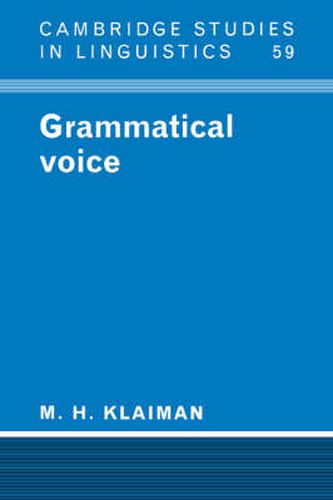Readings Newsletter
Become a Readings Member to make your shopping experience even easier.
Sign in or sign up for free!
You’re not far away from qualifying for FREE standard shipping within Australia
You’ve qualified for FREE standard shipping within Australia
The cart is loading…






Categories of the verb in natural languages include tense, aspect, modality (mood), and voice. Among these, voice, in its rich and diverse manifestations, is perhaps the most complex. But most prior research concentrates on only certain types, predominantly passives. Voice expresses relations between a predicate and a set of nominal positions - or their referents - in a clause or other structure. Grammatical voice is the first typological study of voice systems based on a multi-language survey. It introduces a threefold classification of voice types, in the first place distinguishing passivisation phenomena (derived voice) from active-middle systems (basic voice); and further, distinguishing each of these from pragmatically grounded voice behaviours, such as focus and inverse systems. As the first comprehensive study of voice systems and voice typology, this book makes a significant contribution to current research in linguistics and grammatical theory.
$9.00 standard shipping within Australia
FREE standard shipping within Australia for orders over $100.00
Express & International shipping calculated at checkout
Categories of the verb in natural languages include tense, aspect, modality (mood), and voice. Among these, voice, in its rich and diverse manifestations, is perhaps the most complex. But most prior research concentrates on only certain types, predominantly passives. Voice expresses relations between a predicate and a set of nominal positions - or their referents - in a clause or other structure. Grammatical voice is the first typological study of voice systems based on a multi-language survey. It introduces a threefold classification of voice types, in the first place distinguishing passivisation phenomena (derived voice) from active-middle systems (basic voice); and further, distinguishing each of these from pragmatically grounded voice behaviours, such as focus and inverse systems. As the first comprehensive study of voice systems and voice typology, this book makes a significant contribution to current research in linguistics and grammatical theory.